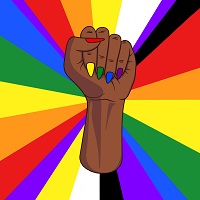For media industries, the US series Pose was a moment. It was a moment when their appointed white gay wunderkind, Ryan Murphy, made good on some of the representational strides he had made in series as wide-ranging as Glee, The New Normal, and American Horror Story. It also seemingly disrupted the casting mantra that suggests when casting trans roles the most important criteria is not the identity of the actor, but that they are the “best” actor who auditioned for the role. Pose, as many headlines touted, assembled the largest cast of trans women of color actors in television history. In Pose, many Black queer and trans viewers “felt seen” in ways they had not been represented before. Now that Pose has been relegated to television history, this keynote presentation attempts to take stock of the series and ask: Does Pose matter? What are the legacies the series built on and what are the legacies it leaves for television to build upon?
As a symposium built upon two posts: post-Obama and post-binary, my keynote uses Pose to examine US media industries, audience imaginations, and the possibilities of representing Black non-binary characters within short-form narrative programming. Obama's election in 2008 offered a false promise that although the West (and beyond) had never adequately dealt with its anti-Blackness, that we had moved beyond race as a matter that structured life, culture, law, and politics. The utility of the discursive move to erase the importance of race generally, and Blackness in particular, was so that, when police and other “vigilantes” killed Black folks including George Floyd, Sandra Bland, Trayvon Martin, Michael Brown, and Eric Garner, among others, they could be killed as “people” not as Black people, thus “all lives matter” becomes the post-racial retort to the very necessary assertion that “Black lives matter.”
Secondarily, we are in a moment in which the gender binary is being contested. Black-cast series like The Carmichael Show have featured episodes in which Black families (and their presumed Black audiences) grapple with this binary (“Gender,” S01E04). But ultimately the binary is pervasive within television even as we hope for a world in which the binary does not exist. We discuss whether one is in or out of the closet. The binaristic engagement with sexualities structures how representation typically happens within commercial media. For example, when the character Darkanian appeared across a seven-episode arc of Let's Stay Together (BET, 2011-2014) he was initially written as a macho, bravura Black (closeted) heterosexual man who dialogically centered his heterosexual desire. Later in his arc, after he has entered a relationship with a woman (with whom he has not had sex because he has suggested they wait), he is revealed to also have a boyfriend, and he later comes out as gay. When asked why the character could not have been bisexual, series showrunner Jacquie Edmonds Cofer told me, “it was a cleaner story.” In other words, working outside sexual binaries is considered messier partly because it opens too many character possibilities. Thus, Darkanian became gay within the script, not bisexual.
Ultimately, then, this keynote engages how Pose, within popular discourse, signaled a shift representationally, industrially, and commercially within an allegedly post-racial and post-binary world.

 PDF version
PDF version
